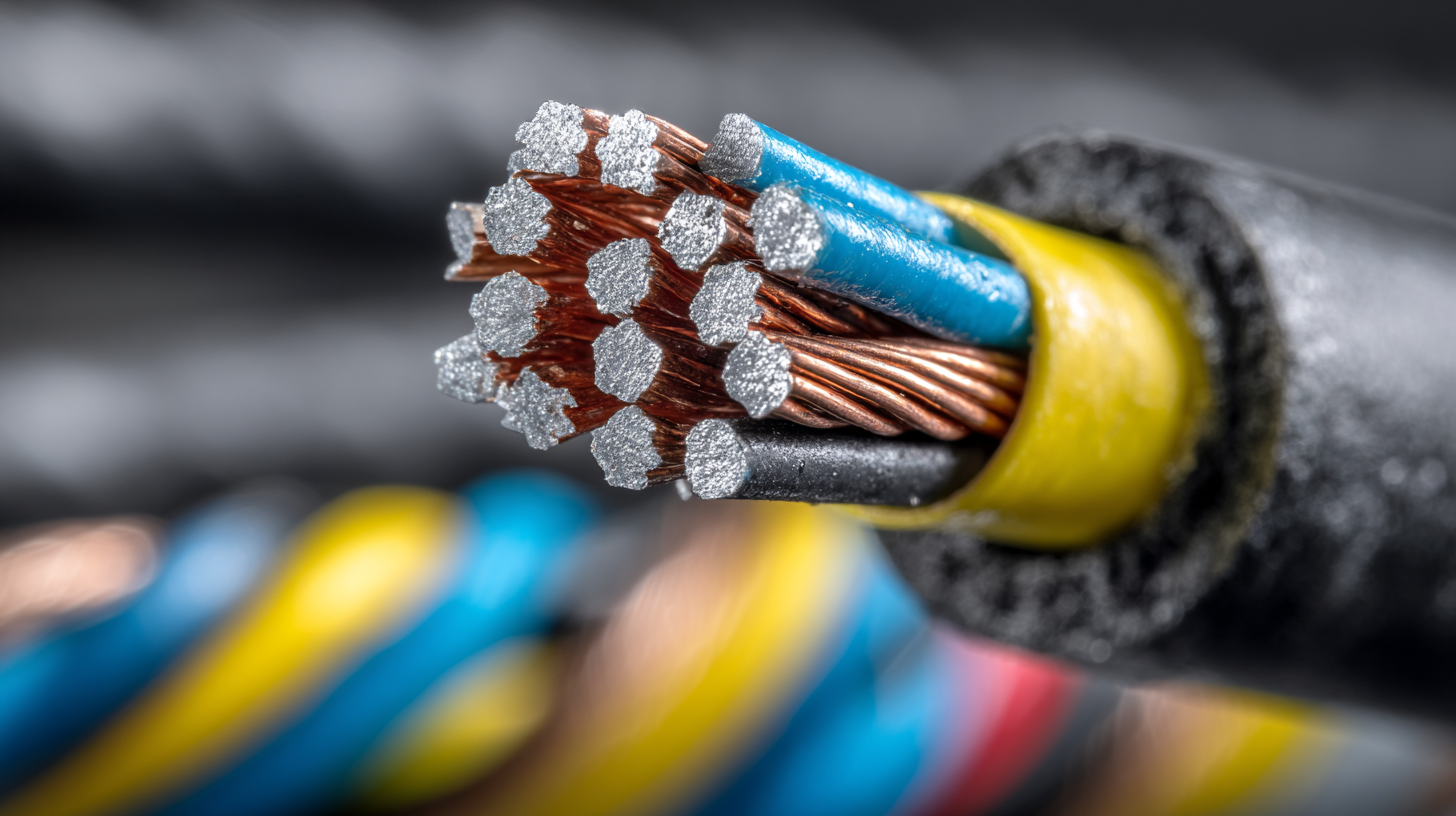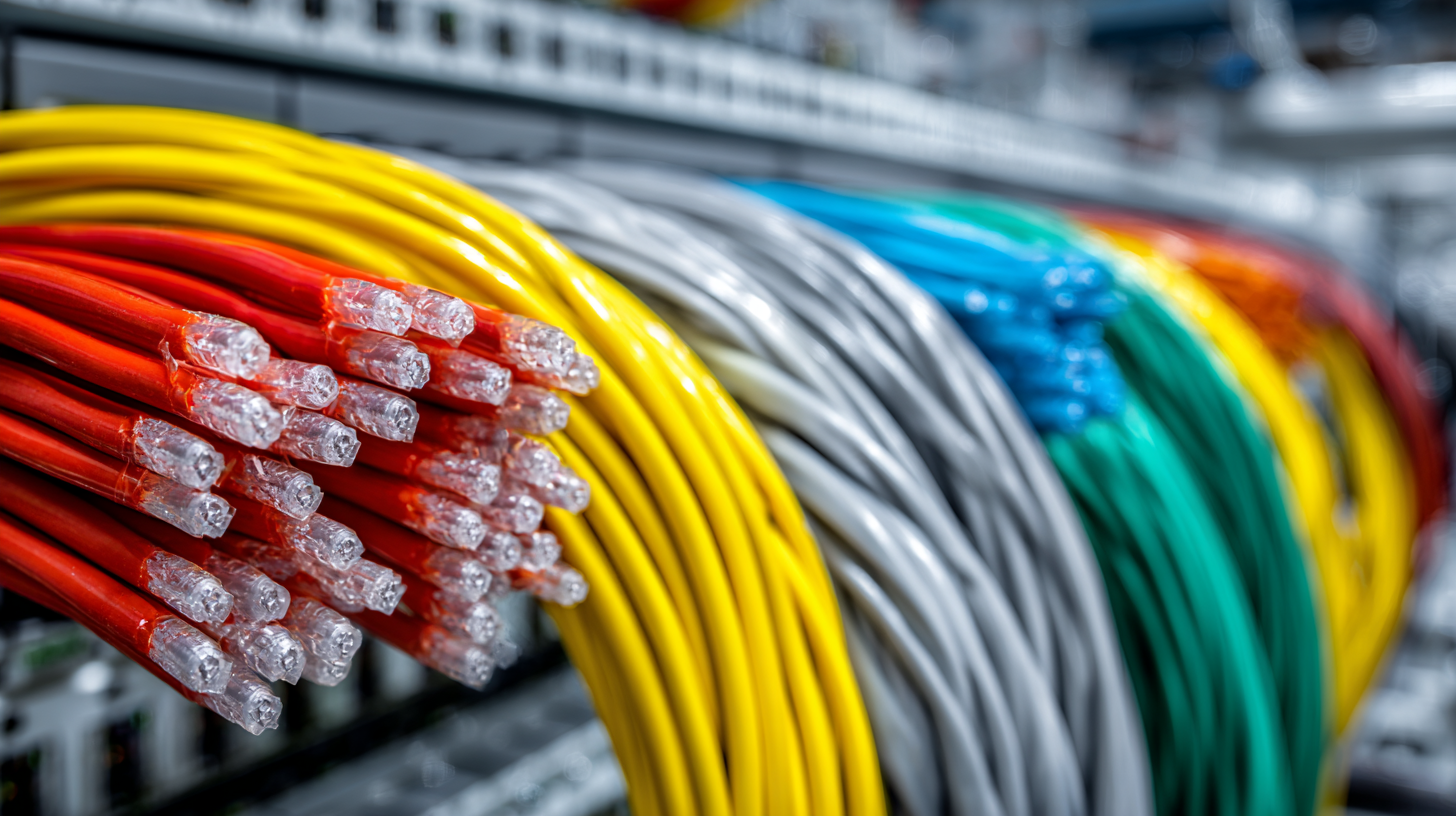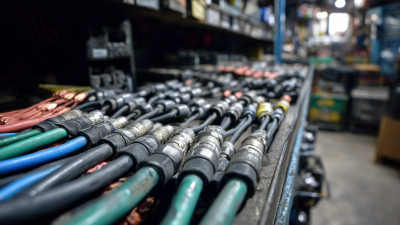Understanding the Essential Role of Wire and Cable in Modern Technology Systems
In today's rapidly evolving technological landscape, the importance of wire and cable systems cannot be overstated. These essential components form the backbone of connectivity in a wide array of modern technology applications, from telecommunications and data transmission to power distribution. As advancements in technology continue to drive innovation, the role of wire and cable becomes increasingly critical in ensuring reliable communication and energy efficiency. The intricacies of wire and cable design and their varying specifications cater to diverse industry needs, enabling everything from high-speed internet access to the operation of sophisticated electronic devices. This comprehensive understanding of wire and cable not only highlights their functional significance but also underscores why they are indispensable in the seamless integration and operation of contemporary technology systems.

The Increasing Demand for Wire and Cable in Global Electrical Markets
The increasing demand for wire and cable in global electrical markets is significantly influenced by the growing focus on renewable energy and sustainable practices. As nations strive to transition to greener energy sources, the need for efficient wiring systems becomes paramount. Reports indicate that the wire and cable market is projected to reach a value of approximately USD 266.17 billion by 2029, growing at a compound annual growth rate (CAGR) of 5.8% from 2025. This growth is largely driven by the expansion of solar, wind, and hydropower installations, which require specialized cabling solutions to facilitate power generation and distribution.
Additionally, the global market for medium voltage cables alone is predicted to hit USD 89.38 billion by 2034, highlighting the critical role these components play in modern electrical infrastructure. As data centers and renewable energy projects proliferate, the demand for high-performance insulated metallic wires is expected to rise. Forecasts suggest that cable demand from data center applications will account for approximately 1% of total global insulated metallic cable demand by 2025, indicating a significant shift towards integrating advanced wire technologies to support digital and energy transitions.

Key Technologies Driving Wire and Cable Innovations Today
The wire and cable industry is experiencing rapid advancements driven by key technologies that cater to the evolving demands of modern applications. According to a report by Grand View Research, the global wire and cable market was valued at approximately $203 billion in 2021 and is projected to grow at a CAGR of around 5.2% from 2022 to 2030. This growth reflects the increasing need for efficient electrical distribution, telecommunications, and renewable energy solutions in today's society.
One of the primary technologies fueling innovation in this sector is the development of advanced materials, such as high-performance polymers and superconductors. These materials not only enhance the conductivity and durability of wires but also allow for the manufacture of lightweight and flexible cables essential for modern electronic devices and electric vehicles. Furthermore, the integration of smart technologies and IoT solutions has led to the creation of smart cables that can monitor their own performance and provide real-time data, thereby improving operational efficiency and safety. As industries continue to digitize and embrace sustainability, the role of advanced wire and cable technologies will become increasingly pivotal in shaping a more connected and environmentally friendly future.
Innovations in Wire and Cable Technologies
Evaluating the Impact of Wire and Cable on Energy Efficiency in Modern Systems
Wire and cable are crucial components in the architecture of modern technology systems, directly influencing the energy efficiency of electrical systems. High-quality cables reduce resistive losses, which helps in maintaining optimal energy utilization. When wire and cable are properly selected based on conductivity, insulation, and size, systems can operate at lower temperatures and minimize energy waste, making them more sustainable in the long run.
Tips: When choosing wiring for your next project, consider using materials with higher conductivity, such as copper or aluminum, and ensure you choose the appropriate gauge to handle the expected load efficiently. Additionally, investing in cables with better insulation can significantly reduce energy leakage, further improving your system's energy efficiency.
Moreover, advancements in cable technology, such as the incorporation of smart materials and innovative insulation techniques, contribute to energy savings. These developments not only enhance power delivery but also support the integration of renewable energy sources in smart grids. As industries strive for greener solutions, the role of wire and cable continues to gain significance in achieving energy efficiency goals.
Tips: Always evaluate the specific energy demands of your system and match them with the right type of wire. Regular maintenance checks can also help identify wear and tear, ensuring that energy efficiency remains optimal over time.
Understanding the Essential Role of Wire and Cable in Modern Technology Systems
| Type of Wire/Cable | Typical Use | Energy Efficiency (%) | Max Operating Temperature (°C) | Market Trends |
|---|---|---|---|---|
| Copper Wire | Power Transmission | 90 | 70 | Increasing demand in renewable energy |
| Aluminum Wire | Household Wiring | 85 | 90 | Cost-effective alternative to copper |
| Fiber Optic Cable | Data Transmission | 92 | 70 | High-speed internet demand |
| Coaxial Cable | Television Signals | 80 | 60 | Declining use with streaming services |
| Twisted Pair Cable | Networking | 75 | 60 | Growth in IoT devices |
Safety Standards and Regulations Governing Wire and Cable Usage
The significance of safety standards and regulations governing wire and cable usage cannot be overstated in the modern technological landscape. As industries increasingly rely on complex electrical systems, adherence to these regulations ensures not only the performance efficiency of equipment but also the safety of personnel and facilities. According to a report by the National Fire Protection Association (NFPA), electrical failures account for approximately 22% of all reported fires in commercial properties. This staggering statistic highlights the critical need for compliance with applicable standards such as the National Electrical Code (NEC) and Underwriters Laboratories (UL), which provide guidelines for the safe installation and use of wire and cable.
Moreover, the International Electrotechnical Commission (IEC) establishes global safety benchmarks for electrical and electronic systems. Their standards address various aspects, from cable construction materials to environmental resistance, ensuring that wire and cable products can withstand harsh conditions while maintaining operational integrity. Recent studies indicate that adherence to these safety regulations can lead to a 30% reduction in electrical hazards within industrial environments. By implementing rigorous safety protocols and continuously updating regulations in line with technological advancements, stakeholders can protect their investments while fostering a safer working environment.

Future Trends: Smart Wire and Cable Solutions in IoT and Automation
The rise of smart technologies and the Internet of Things (IoT) has highlighted the critical importance of advanced wire and cable solutions. As automation continues to penetrate various industries, the demand for intelligent connectivity increases. Smart wires and cables are designed not only for power transmission but also for data communication, making them essential in achieving seamless integration of devices in smart homes, factories, and cities.
Tips: When selecting wire and cable for IoT applications, consider solutions that incorporate sensors or perform diagnostics. This can offer real-time data on system performance, enabling predictive maintenance and reducing downtime. Opting for flexible and adaptable cable designs will also ensure that your infrastructure can accommodate future innovations.
In addition to functionality, the durability and environmental resistance of materials are becoming increasingly crucial. These smart solutions must withstand varying conditions while ensuring longevity. Investing in high-quality cables can mitigate the risks of outages or failures in automated systems, ultimately leading to enhanced efficiency and cost savings for businesses.
Tips: Always check compliance with industry standards when purchasing wires and cables. This not only ensures safety but also guarantees that your installation will meet future technological advancements.
Related Posts
-

Exploring the Advantages of 4 Core Cable in Modern Electrical Installations and Its Impact on Efficiency
-

Understanding Lead Cables: Essential Insights for Safe Electrical Installations
-

Understanding Multi Conductor Cables: Essential Tips for Effective Electrical Wiring
-

Essential Automotive Cable Maintenance Tips for a Smooth Ride
-

Exploring the Essential Role of Power Wires in Modern Electrical Systems
-

Exploring the Role of Cable Suppliers in Sustainable Energy Solutions
